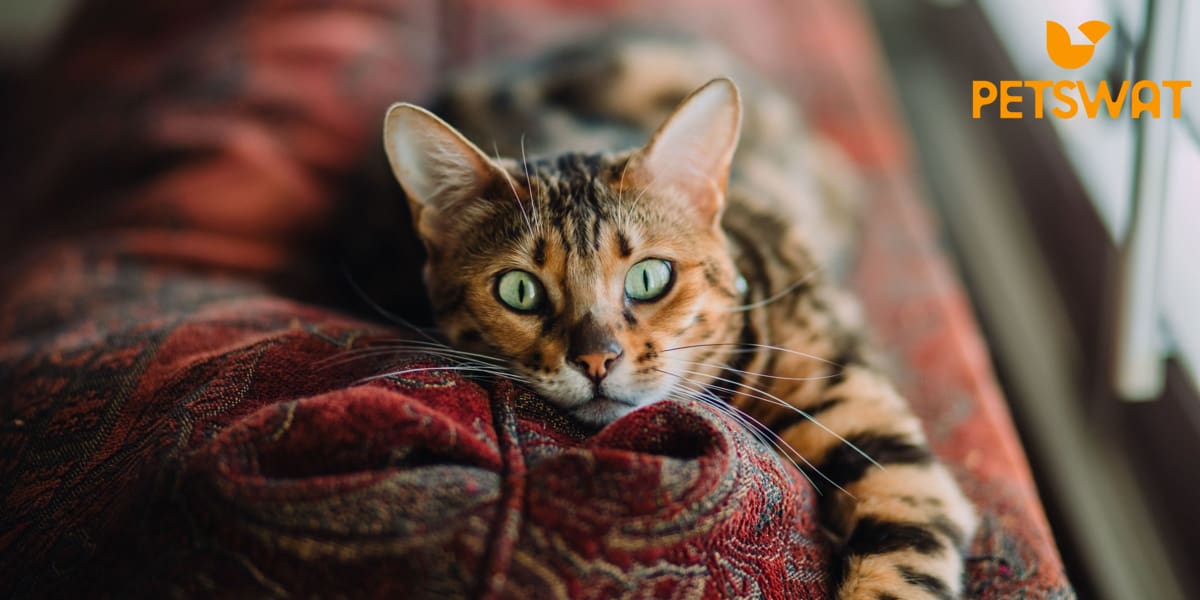Bengal cats, known for their striking appearance and energetic demeanor, captivate cat enthusiasts worldwide. Their unique coat patterns and active personalities make them a favorite among cat lovers seeking a companion that stands out from the crowd. However, with their high energy levels and curious nature, Bengal cats can also present training challenges. Fear not, as this guide is here to help you unlock the potential of training your Bengal cat. From teaching basic commands to channeling their boundless energy, we’ll delve into the art of how to train a Bengal cat, creating a harmonious and interactive relationship. Get ready to embark on a journey of feline education and enrichment! 🐾🐅
TL;DR: Training a Bengal cat requires understanding their high energy levels and intelligent nature. This guide covers various aspects of training, from establishing a foundation of trust to teaching commands and engaging in interactive play.
The Bengal cat’s exquisite appearance and intelligent disposition set them apart in the feline world. These cats, a crossbreed between the Asian leopard cat and domestic breeds, boast striking rosette or marbled coat patterns reminiscent of their wild ancestors.
However, behind their majestic appearance lies a cat that craves mental and physical stimulation. Training a Bengal cat goes beyond obedience; it’s about tapping into their inquisitive nature and providing an outlet for their energy.
Understanding Bengal Cat Traits
- High Energy Levels:
- Endless Curiosity: Bengal cats are naturally curious and thrive on exploration. They love to investigate their surroundings and engage in interactive play.
- Physical Activity: These cats have a strong desire for physical activity, which makes them excellent candidates for agility and interactive training.
- Intelligence and Trainability:
- Clever Minds: Bengal cats are highly intelligent and quick learners. They can grasp concepts and respond to commands when properly trained.
- Problem-Solving Skills: Their intelligent nature means they enjoy mental challenges and puzzle-solving activities.
- Social and Playful Nature:
- Social Bonds: Bengal cats often form strong bonds with their human companions. They enjoy interactive play and thrive on social interaction.
- Playful Demeanor: Their playful nature extends to various toys and activities, making training through play particularly effective.
Building Trust and Bonding
- Create a Safe Space:
- Comfort Zone: Establish a safe and welcoming environment where your Bengal cat can feel at ease.
- Quiet Retreat: Provide hiding spots or elevated spaces where they can retreat when needed.
- Positive Association:
- Treats and Rewards: Use treats and praise to create positive associations with training sessions and commands.
- Gentle Approach: Handle your Bengal cat gently and with patience to build trust and avoid triggering anxiety.
- Playtime Bonding:
- Interactive Play: Engage in interactive play sessions using toys like feather wands and puzzle toys. This strengthens the bond between you and your cat.
Basic Training Commands
- Teaching “Sit”:
- Luring Technique: Hold a treat above your cat’s head, guiding them into a sitting position. Reward and praise when they sit.
- Mastering “Come”:
- Positive Reinforcement: Call your cat’s name and use a cheerful tone. Reward them with treats and affection when they come to you.
- “Nail Trim” Training:
- Desensitization: Gently touch your cat’s paws and nails regularly, gradually introducing the sensation. Reward them each time.
Advanced Training and Enrichment
- Harness and Leash Training:
- Gradual Introduction: Introduce the harness and leash indoors, allowing your Bengal cat to get accustomed to the feeling.
- Agility and Puzzle Training:
- Create an Agility Course: Design a simple obstacle course using household items to engage your cat’s agility skills.
- Puzzle Feeders: Use puzzle feeders to stimulate their problem-solving abilities while providing mental and physical enrichment.
- Tricks and Behaviors:
- Target Training: Teach your Bengal cat to touch a target stick with their nose or paw, leading to more complex tricks.
- Retrieve and Fetch: Utilize their playful nature to teach them to retrieve and fetch toys.
Conclusion
Tips From Experienced: Consistency, positive reinforcement, and understanding your Bengal cat’s unique traits are key to successful training. Embrace their curiosity and energy in your training approach.
FAQs
Q1: Can Bengal cats be trained to walk on a leash?
A: Yes, many Bengal cats can be trained to walk on a leash with patience and gradual introduction to the harness and leash.
Q2: Are Bengal cats suitable for apartment living?
A: Bengal cats can adapt to apartment living, but they require ample play and mental stimulation due to their energetic nature.
Q3: Can Bengal cats get along with other pets?
A: Bengal cats are social and can get along with other pets if properly introduced. Socialization and positive experiences are important.
Q4: Do Bengal cats require a special diet due to their energy levels?
A: While Bengal cats have high energy, a balanced and appropriate diet for their age and activity level is more important than a special diet.
Q5: Are there any potential behavior challenges with Bengal cats?
A: Bengal cats’ energy can lead to boredom-related behaviors if not engaged. Providing ample play, enrichment, and training can help mitigate this.
Summary Conclusion
Training a Bengal cat is an exciting journey that enhances their intelligence, bonds, and overall well-being. By acknowledging their unique traits, building trust, teaching basic commands, and embracing interactive play, you’ll unlock the full potential of your Bengal companion. Remember, training is a continuous process that strengthens your connection with your feline friend.
Fun Fact: Bengal cats are known for their love of water, often enjoying activities like playing with dripping faucets or splashing in shallow water bowls. This unique trait adds to their dynamic and captivating personality!
Originally posted 2023-08-12 10:08:02.
Johny is a dedicated pet enthusiast, author, and the driving force behind the insightful content at PetSWAT. With a deep passion for animals and a wealth of knowledge acquired through years of experience, Johny brings a unique perspective to the world of pet care and companionship.



